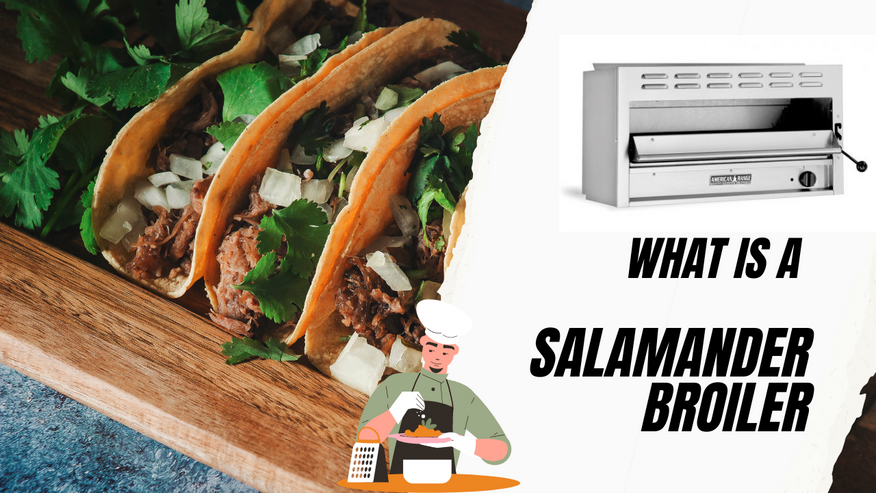Mar 30th 2023 - Team
What Is a Salamander? How to Choose the Best One?
A salamander oven, sometimes known as a salamander broiler, is a high-temperature cooking appliance that can be used for a variety of purposes. In this article, we'll discuss why a commercial salamander broiler may be useful in your kitchen and the factors you should weigh before making a purchase.
What Is a Salamander?
Salamander ovens are unique cooking appliances designed specifically for broiling food at temperatures significantly higher than those reached by a standard oven's broil setting. To cook its food uniformly, a salamander directs infrared or radiant heat down onto it. Because they enable for broiling or finishing to be done in a separate unit, freeing up oven space, they are an invaluable addition to any commercial kitchen.
Different Types of Salamander Broilers
Modern ovens are more complex than their forebears, but they still work on the same principle: generating a large volume of rapid heat. One key distinction concerns the energy supply behind the salamanders' renowned rapid cooking.
Ceramic
When using a ceramic baking chamber liner, heat is often dispersed more uniformly. That's heat that doesn't escape the oven. It's the go-to option for many businesses, especially smaller ones and new ventures with a tight budget.
Infrared
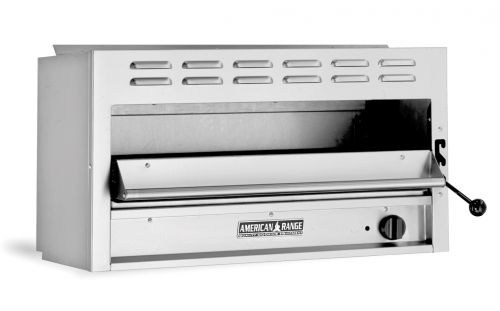
Infrared is a more specific method, producing concentrated and concentrated heat. In a busy kitchen, time is of the essence, and an infrared broiler's fast-heating components are a lifesaver. When cooking for a large number of people, this is the best option.
American Range ARSM-36
Gas Operated
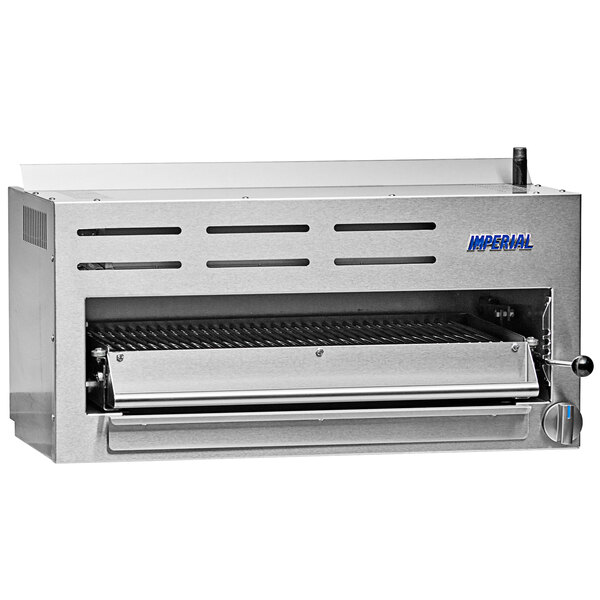
For kitchens that already have gas hookups and would rather have all of their appliances run off of one central gas line, salamanders that are powered by gas are another viable alternative.
Imperial IRSB-36
Electric-Operated
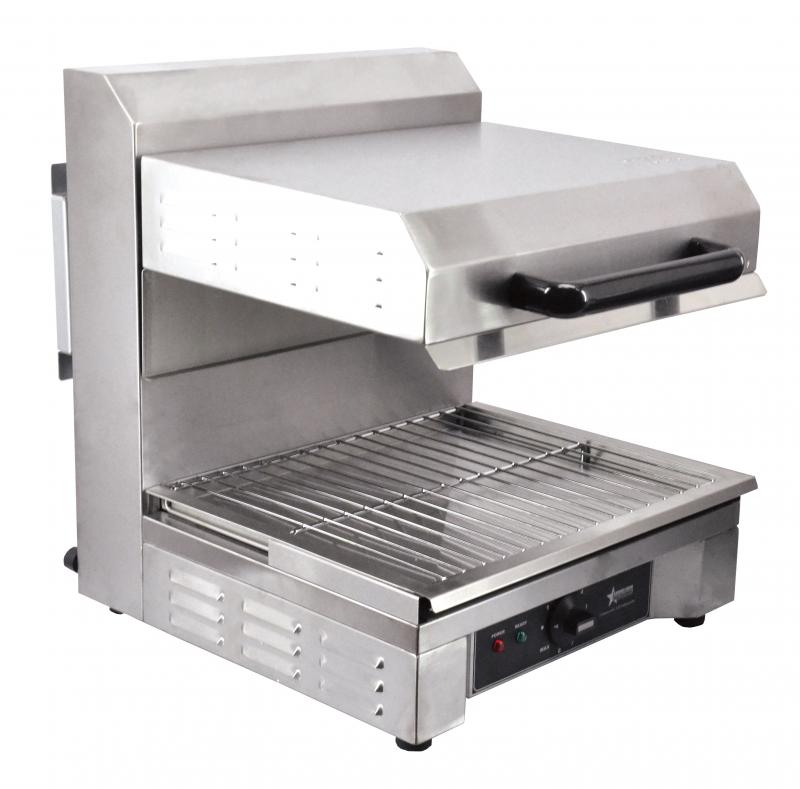
Traditional electrical power is used by several types of kitchen salamanders as well. Unfortunately, these models typically take longer to warm up and are slower overall.
Omcan USA 39581
Salamander Broiler vs Broiler
A salamander can broil, melt cheese, and perform many other tasks all at once. As a result, salamanders can be used to prepare meals from start to finish, not just to reheat or garnish them. A grease pan and cooking grate are also included with a salamander.
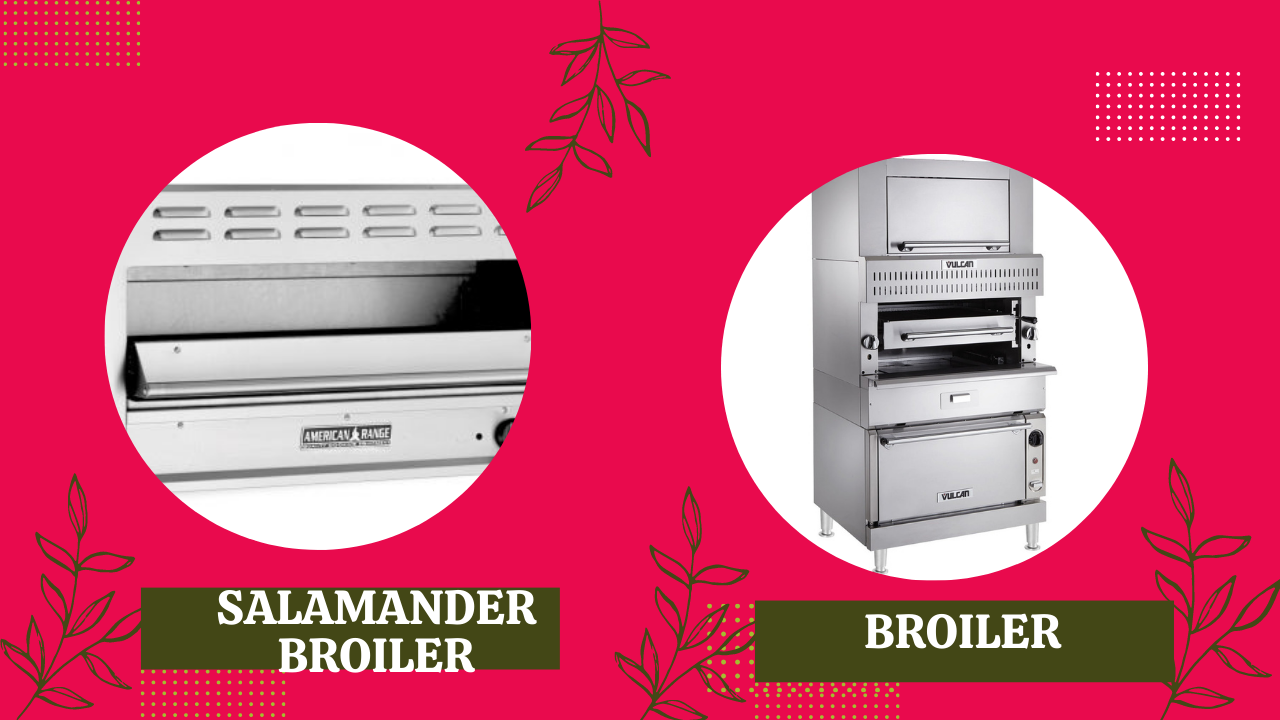
Cheesemelter vs Salamander Broiler
A cheese melter's low heat output makes it ideal for browning an au gratin dish, browning the cheese on nachos, or preparing open-faced sandwiches. They're great for serving appetizers, and sweets, and even warming up leftovers. Yet, their capabilities and dimensions are restricted.
A cheese melter is a specialized oven used for melting cheese. Radiant heat sources like these are normally used for finishing up already-prepared meals. A cheese melter can only do so much.
A salamander, on the other hand, has capabilities well beyond those of a cheese melter. Its wider temperature range provides flexibility and quickness, both of which are essential in industrial kitchens.
A salamander is great for broiling meats and bringing the temperature up on rare steaks because of its concentrated heat and top-down broiling movement. In addition to serving as a rotisserie for roasts and poultry, they can be used to brown the tops of casseroles and other meals. Grill marks can be left on many types of meat with the help of metal racks, grates, and drip trays that come standard on many salamanders.
What Not to Prepare in One
A word on dinner plates. It's important to use the right dishes in your salamander to avoid any mishaps. Use only broiler-safe dishes at all times. Metal plates and bowls, cast-iron skillets, and other similar items are great options.
Grease is another crucial factor in ensuring everyone's safety. Little amounts of grease from industrial salamanders will be released into the atmosphere. Your salamander will need adequate airflow.
No matter the look you go for, it's important to have a firm grasp of the kitchen's layout, dimensions, and power points.
How to Choose the Best Commercial Salamander Broiler
Choose the power source, installation method, heating preference, and salamander oven size that will work best in your kitchen.
Type of power

When picking a salamander, you can prioritize one of two distinct power profiles.
Cafes, kiosks, and delis, which often have low to moderate volume and no access to a gas line, are perfect locations for electric salamanders. Because of their tremendous output, gas salamanders (available in either natural gas or liquid propane) are the ideal power source for high-volume eateries such as bars and grills, diners, and steakhouses.
Type of Installation
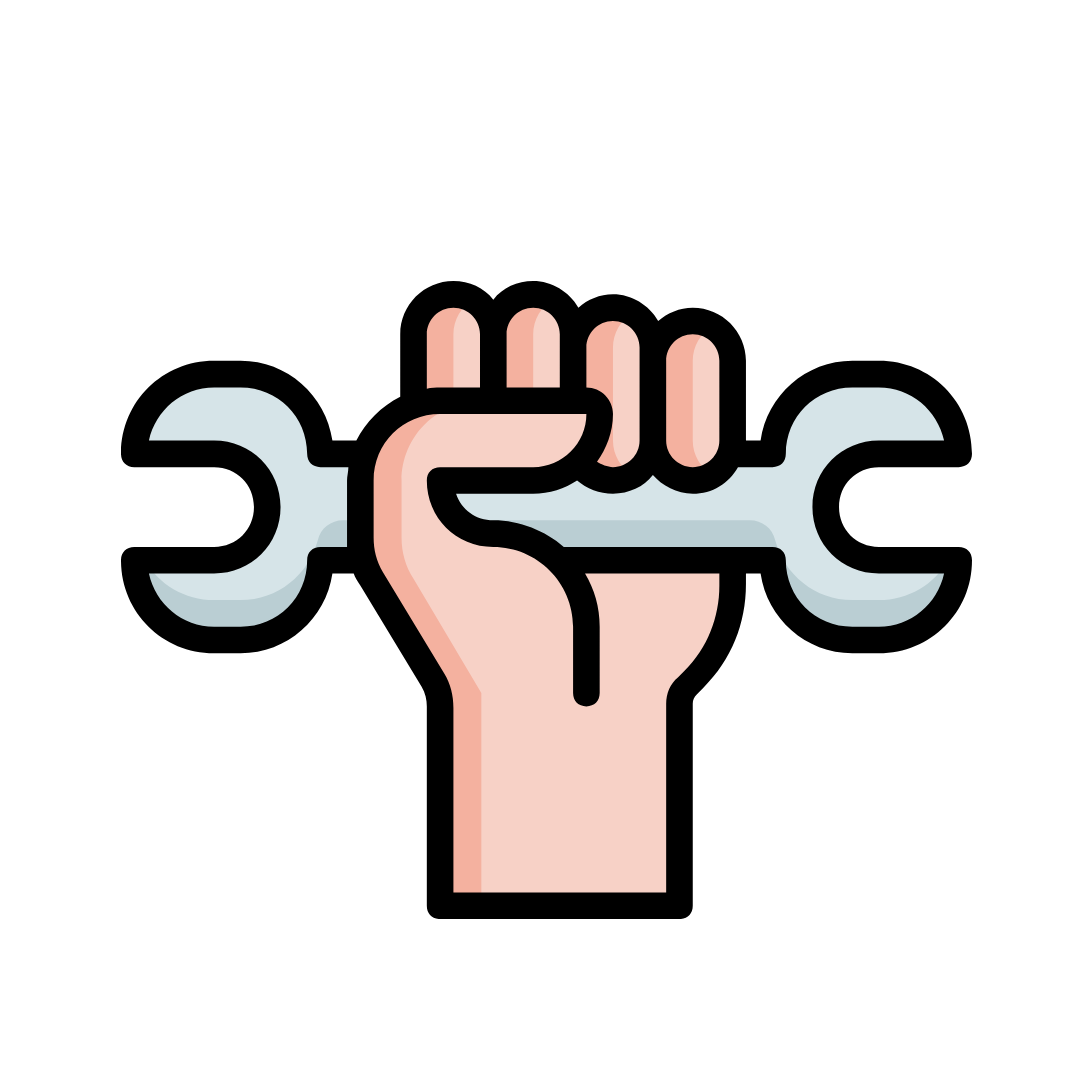
If you don't have a lot of cabinet space, you may want to consider a wall-mounted salamander oven. Ventilation is essential for any kind of setup.
Countertop Salamander
- Minimalist in size, so it won't take up too much room on your desk
- Excellent for businesses that require a dedicated broiling apparatus
Range Mounted Salamander
- Reduces the need for table and floor space
- Keep a close eye on the cooking process while on the phone.
Wall Mounted Salamander
- Do cooking tasks without slowing down the kitchen
- The perfect solution for little kitchens
Type of Heating Style

For a commercial salamander, infrared and radiant heating elements are your two most common options.
Infrared salamander broilers are great for high-throughput kitchens because of the efficient, focused heat they apply to food. The infrared salamander has a far shorter heating time than the radiant variety.
In order to get the best possible cooking outcomes, radiant salamander broilers disperse the burner heat throughout the unit. The BTU output of a radiant salamander is often greater.
Food can be cooked more quickly by a salamander with a larger BTU since it can produce more heat for a longer period of time.
When deciding on the size of your salamander, take into account both the available counter space in your kitchen and the total number of servings you intend to make using the appliance.
Even the largest salamanders can only accommodate a maximum of two pans due to their narrow 17-inch width. These smaller salamanders are better suited for kitchens with low to moderate traffic that rarely utilize the broiler. We have salamanders with widths of up to 60 inches for handling bulky items. These salamanders, which are of a more substantial size, are better suited to busy commercial kitchens.

